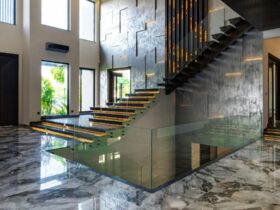Acrylic has become a trusted alternative to glass in schools, offices, and homes. Its lightweight strength and clear finish make it ideal for both practical and decorative uses.
But with many choices available, knowing which type to pick can be overwhelming. By learning what matters most, you’ll be ready to make a confident choice. Keep reading to find out how to select the best sheet for your needs.
Understanding the Main Types of Acrylic Sheets
Acrylic sheets come in different grades and finishes. The two most common are cast acrylic and extruded acrylic.
Cast acrylic is known for its durability and resistance to chemical reactions, and it also provides better optical clarity. Extruded acrylic, on the other hand, is easier to cut and shape, making it a cost-effective option for projects that need precise fabrication.
For projects where strength and finish are important, cut-to-size clear Perspex panels provide the transparency of glass with improved impact resistance. These are popular for protective screens, signage, and furniture designs.
Thickness and Its Impact on Durability
The thickness of an acrylic sheet plays a huge role in how it performs. Thinner sheets, often between 2mm and 5mm, are suitable for lightweight displays and craft projects. For applications like partitions, safety screens, or window replacements, thicker sheets around 8mm to 12mm are better because they resist bending and impact.
Choosing the right thickness ensures that your sheet not only lasts longer but also keeps its shape under stress. Always match the sheet’s thickness to the level of physical pressure it’s likely to face.
Clarity and Light Transmission
One of acrylic’s greatest strengths is its optical clarity, with clear sheets allowing up to 92% of visible light through. This makes them clearer than standard glass. If your project needs maximum brightness, opt for clear cast acrylic. For privacy or decorative use, frosted or tinted sheets may be the better choice.
Remember that while tinted and frosted sheets reduce visibility, they still allow plenty of light to pass through. This balance makes them a practical choice for office partitions or stylish home features.
Cutting and Shaping Options
Acrylic is easier to cut than glass, but the method depends on the sheet type. Extruded acrylic is easier to machine and laser-cut, while cast acrylic provides cleaner edges when polished. Many suppliers offer a cut-to-size service, which means you can order panels already shaped for your project.
This service reduces waste and ensures greater accuracy if you’re working on a project where dimensions must be exact. It also helps when fitting panels into ready-made frames or fixtures.
Final Message
Choosing the right cut-to-size acrylic sheet depends on understanding your project’s demands. Thickness, clarity, and resistance to weather all influence performance. Cast acrylic offers better clarity and strength, while extruded acrylic provides cost savings and easy shaping.
By matching the type of acrylic to your intended use, you’ll achieve the perfect balance between function, durability, and appearance. Whether you need panels for safety screens, displays, or decorative features, acrylic offers a versatile solution that delivers both style and strength.







